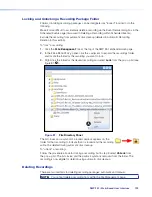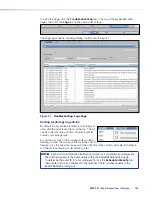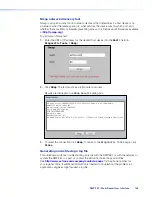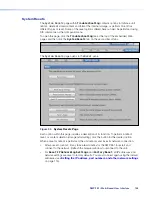
3.
Open an SFTP client program of your choice.
4.
Paste the URL from the SMP 351 into the host name or host address field of the SFTP
client program. If necessary, delete "sftp" from the URL and select SFTP from a different
field or menu and remove the port number from the URL and paste it into a port number
field.
5.
If an administrator username and password are set for the unit, enter those in the
appropriate fields in the SFTP client.
6.
Log into or connect to the SMP 351 .
7.
Use the FTP client software to copy files (recordings, logs, background images) to and
from the internal storage folders on the SMP 351 .
8.
Disconnect from the SMP 351 (close the SFTP session).
Troubleshooting
Troubleshooting Overview
The five pages within the
Troubleshooting
tab contain controls typically used during
initial setup to test connections and then later if a product support issue arises. They make
it possible for a user logged in as an administrator to view current system conditions and
connections, view event logs and alarms, test network connections, and reset the unit.
Only administrators have access to the
Troubleshooting
tab and can see and make
changes to all settings.
Figure 85.
Troubleshooting Tab
Features of the Troubleshooting Tab
The pages within
Troubleshooting
include the following:
Status
— Displays information about the firmware and Web page versions, system and
component temperatures, fan speeds, Ethernet connection, MAC address, date and
time, as well as details about the bit rates for audio and both the archive and confidence
encoding streams.
Logs
— Displays a list (log) of alerts and notices for any event set up for any status other
than
Disabled
in
Configuration
>
Alarms
and
Traps
>
Alarm
Message
List
.
The log can be sorted by date and time, severity, ID, or message. It can also be filtered, or
exported to a CSV file.
Alarms
— Similar to Logs, this page displays a list of the more severe events that triggered
alarms. The list can be sorted, filtered, or exported to a CSV file. Individual alarms can be
cleared.
Diagnostic
Tools
— Provides a convenient way to test network connections using a
ping utility or a trace route (tracert) function.
System
Resets
— Initiates a unit reboot, deletes all stored content and formats the
internal storage, or performs one of five different types of reset.
SMP 351 • Web-Based User Interface
138
















































